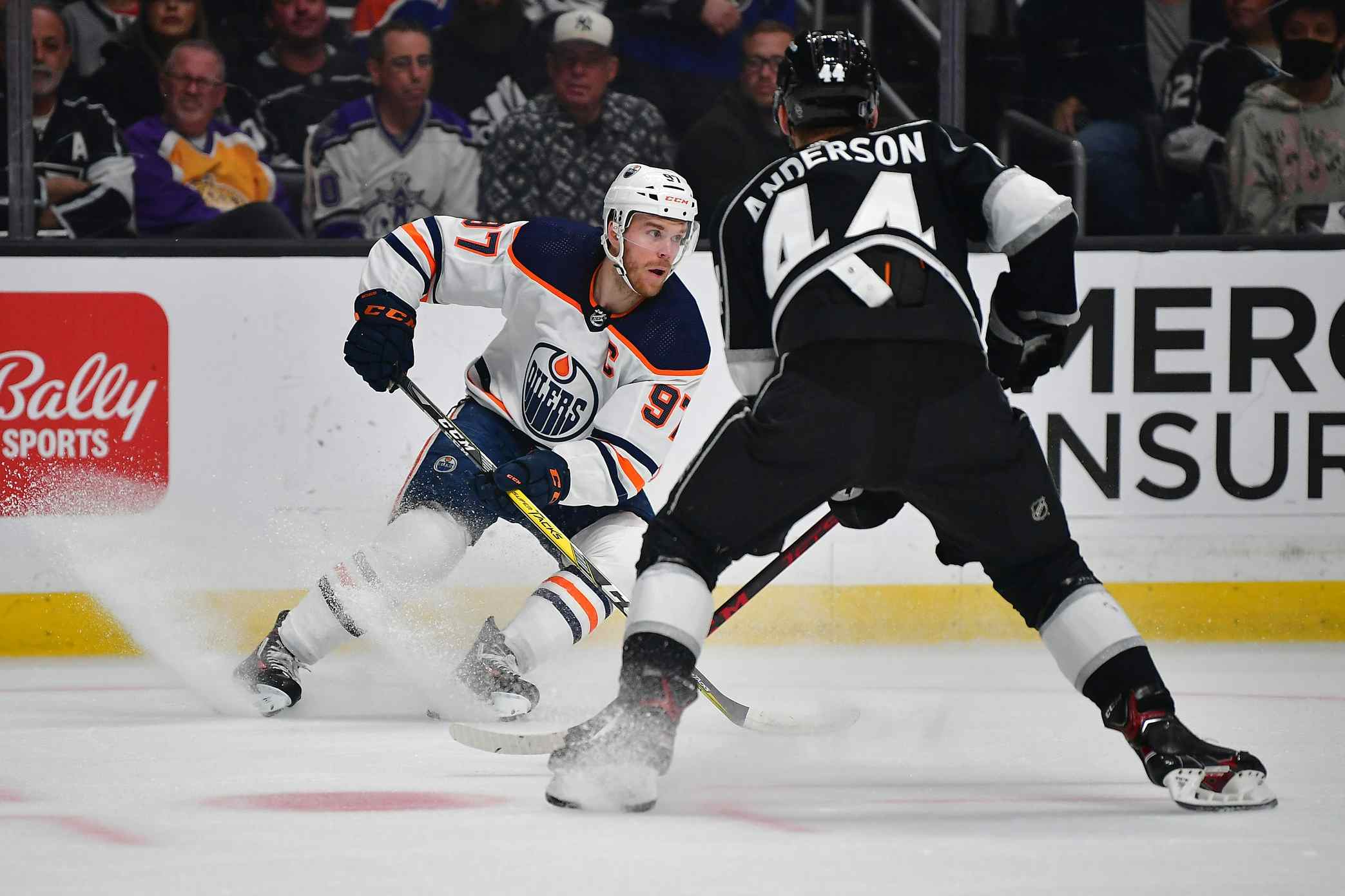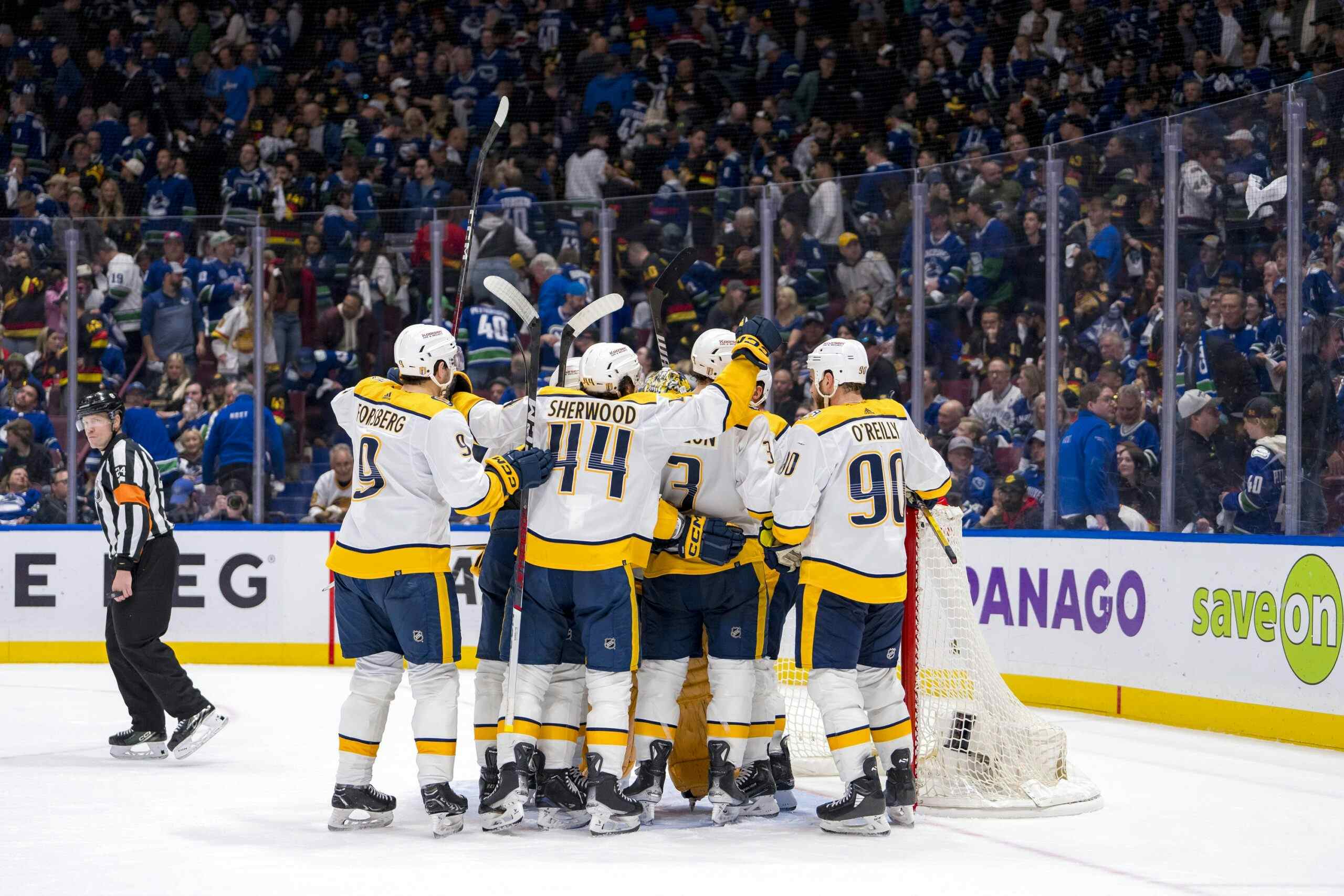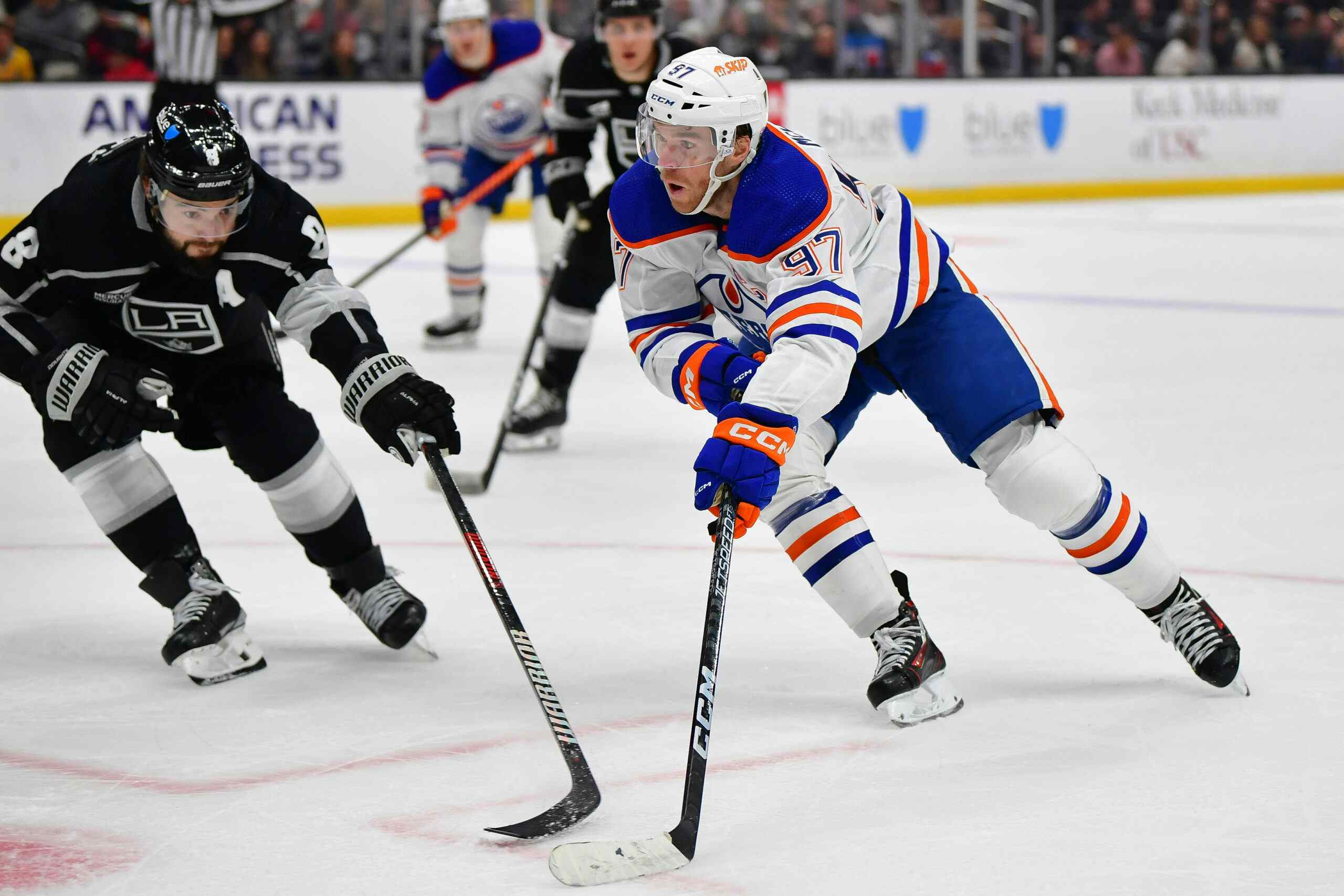Learning from the San Jose Sharks’ Power Play

It’s easy to think of a power play a little bit like a chess game. The players gain the zone through a carefully planned entry, setup and then create scoring chances through clever puck movement and intelligent positioning.
The problem with the chess analogy is that it’s too slow, too static, too built on patiently creating the right opening. As the San Jose Sharks have shown over the last few years, successful power plays are anything but patient.
This morning I went back and watched the last 30 power play goals scored by the Sharks in 2014-15 and found some points of interest which may apply to the Oilers next season.
Load up the first unit and play the life out of them. Twenty-four of the 30 goals scored were put in by the Sharks’ first unit. San Jose wasn’t shy about running Joe Thornton, Joe Pavelski, Logan Couture, Patrick Marleau and Brent Burns into the ground five-on-four, and for the most part the results back up that decision. The names on the second unit were a lot less impressive due to the decision to load up the first power play, but the first power play scored so much that it really didn’t matter.
Attack immediately. Nine of the 30 goals were scored immediately following a faceoff or a zone entry. The Sharks don’t gain the zone, then settle in and wait for everyone to find their positions; they attack the net as soon as they gain the zone. It isn’t just the puck carrier who attacks, either; seven of those nine goals were redirects, screens or rebounds. The guy with the puck goes to the net; seemingly everyone else tries to beat him there.
Ugly goals count just as much as pretty ones and they’re easier to create. Twenty of the 30 goals in my sample were scored off redirections, off rebounds or through screens. This is a particularly valuable point when we look at the names on San Jose’s first unit; all of these guys are skilled players capable of pulling off tic-tac-toe passing plays and making ridiculous moves with the puck. The Sharks coaching staff, however, got them to buy in to doing the ugly things that make a power play successful.
A quick shot is often better than a hard shot. I didn’t count the examples, but one trend I noticed over and over again was that the Sharks made a point of getting the puck away quickly rather than getting it away at maximum velocity. Sure, there were a couple of booming point shots by Burns but for the most part the Sharks leaned hard on quick wrist shots and lots of traffic.
As an example of these things, I like this goal scored against the Oilers in February, a goal which captures all of the above points:
- It’s a shame the replay doesn’t show it, but the time between San Jose’s faceoff win and Pavelski’s goal is all of seven seconds. The Sharks get possession, spread out to draw the defenders and then Marleau puts the puck in front of Pavelski and that’s all she wrote.
- What a beautifully ugly goal from some very talented players. It’s a nice pass by Marleau, but Pavelski doesn’t even field it cleanly. Instead, he backstops his stick with his skate, the pucks hits his skate and banks in past Viktor Fasth.
- As a bonus, it’s fun to slow things down and look at the possibilities created by Marleau’s hard pass. It’s hard enough that Keith Aulie isn’t likely to control it even if he manages to block it, and Marleau’s going to be steaming toward the blocked puck faster than anyone else can get there, so there’s little risk of losing the puck that way. If, on the other hand, Pavelski misses the puck it’s going to go right through to Joe Thornton’s corner, and he has time and space to retrieve it. This is a simple, ugly little play but the beauty of it is that San Jose wins no matter what. If the pass is blocked, Marleau retrieves it. If the pass misses, Thornton retrieves it. If the pass connects, Pavelski has a point-blank scoring chance.
It’s going to be very interesting to see what San Jose’s former coaches can do with the offensive talent on the Oilers’ roster. I expect we’ll see a much quicker, much more aggressive power play.
I also wonder about that first unit. I’ve been inclined to assume that we will see Ryan Nugent-Hopkins and Connor McDavid anchoring different units but watching all these goals I wonder if Todd McLellan and Jay Woodcroft don’t just decide to load the first unit with the four best scoring forwards on the team from Game 1.
RECENTLY BY JONATHAN WILLIS
Recent articles from Jonathan Willis





